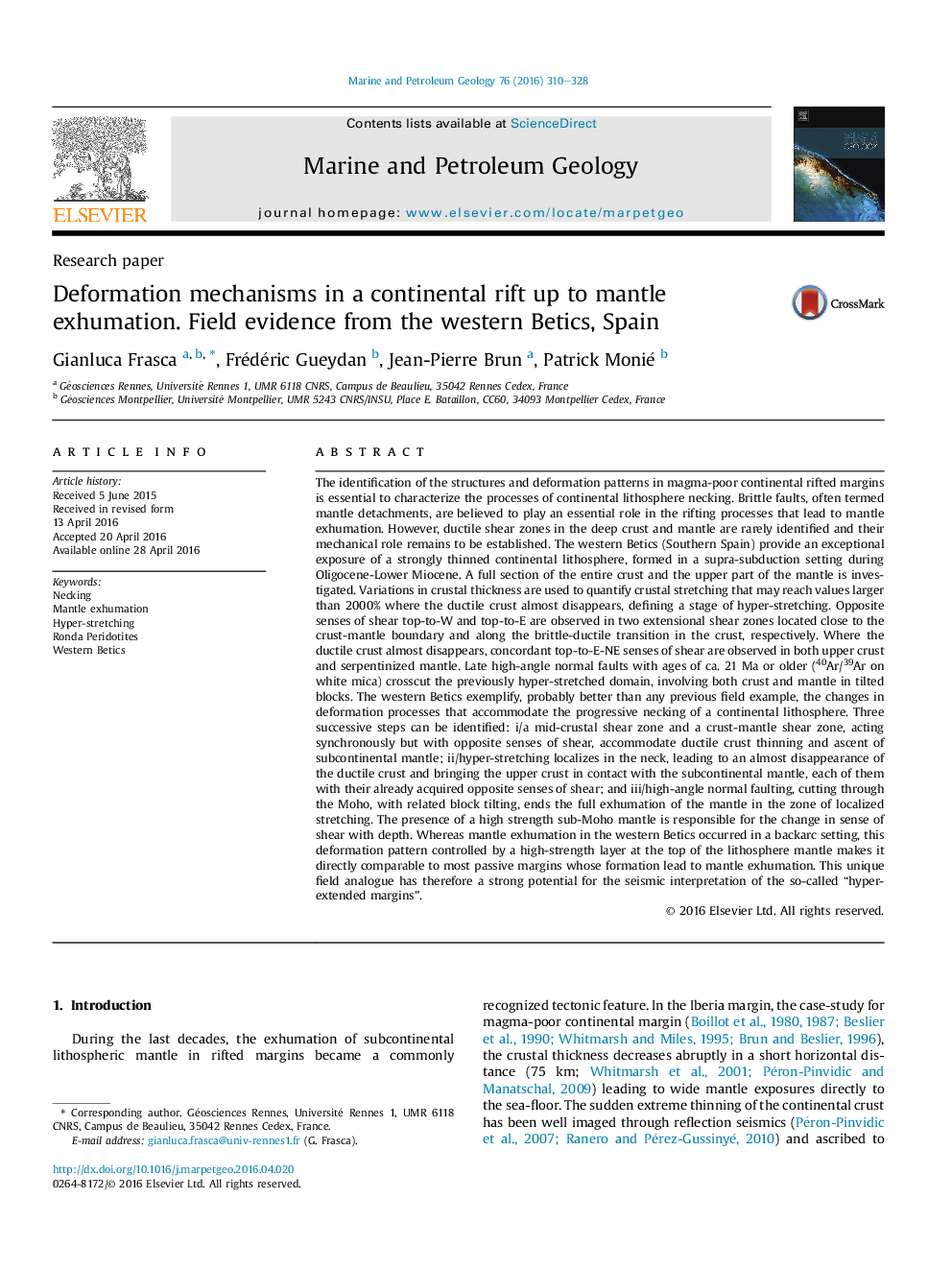| Article ID | Journal | Published Year | Pages | File Type |
|---|---|---|---|---|
| 6434742 | Marine and Petroleum Geology | 2016 | 19 Pages |
â¢Exceptional exposure of a continental lithosphere necking up to mantle exhumation.â¢Middle crust and crust-mantle shear zones with opposite senses of shear.â¢Strong ductile crust thinning accommodated by these conjugate shear zones.â¢Mechanical coupling of upper crust and mantle in the zone of hyper-stretching.â¢Late stages of mantle exhumation by high-angle normal faulting.
The identification of the structures and deformation patterns in magma-poor continental rifted margins is essential to characterize the processes of continental lithosphere necking. Brittle faults, often termed mantle detachments, are believed to play an essential role in the rifting processes that lead to mantle exhumation. However, ductile shear zones in the deep crust and mantle are rarely identified and their mechanical role remains to be established. The western Betics (Southern Spain) provide an exceptional exposure of a strongly thinned continental lithosphere, formed in a supra-subduction setting during Oligocene-Lower Miocene. A full section of the entire crust and the upper part of the mantle is investigated. Variations in crustal thickness are used to quantify crustal stretching that may reach values larger than 2000% where the ductile crust almost disappears, defining a stage of hyper-stretching. Opposite senses of shear top-to-W and top-to-E are observed in two extensional shear zones located close to the crust-mantle boundary and along the brittle-ductile transition in the crust, respectively. Where the ductile crust almost disappears, concordant top-to-E-NE senses of shear are observed in both upper crust and serpentinized mantle. Late high-angle normal faults with ages of ca. 21 Ma or older (40Ar/39Ar on white mica) crosscut the previously hyper-stretched domain, involving both crust and mantle in tilted blocks. The western Betics exemplify, probably better than any previous field example, the changes in deformation processes that accommodate the progressive necking of a continental lithosphere. Three successive steps can be identified: i/a mid-crustal shear zone and a crust-mantle shear zone, acting synchronously but with opposite senses of shear, accommodate ductile crust thinning and ascent of subcontinental mantle; ii/hyper-stretching localizes in the neck, leading to an almost disappearance of the ductile crust and bringing the upper crust in contact with the subcontinental mantle, each of them with their already acquired opposite senses of shear; and iii/high-angle normal faulting, cutting through the Moho, with related block tilting, ends the full exhumation of the mantle in the zone of localized stretching. The presence of a high strength sub-Moho mantle is responsible for the change in sense of shear with depth. Whereas mantle exhumation in the western Betics occurred in a backarc setting, this deformation pattern controlled by a high-strength layer at the top of the lithosphere mantle makes it directly comparable to most passive margins whose formation lead to mantle exhumation. This unique field analogue has therefore a strong potential for the seismic interpretation of the so-called “hyper-extended margins”.
Graphical abstractDownload full-size image
